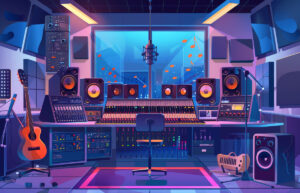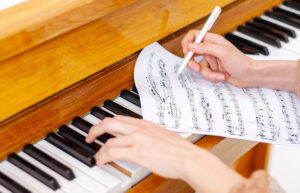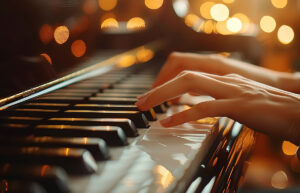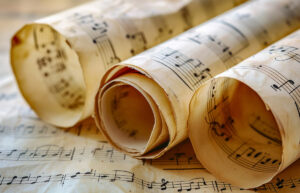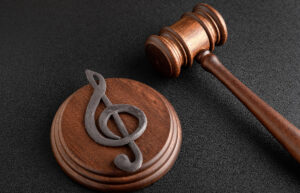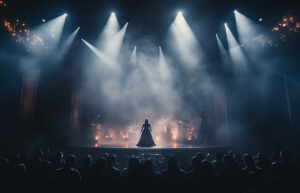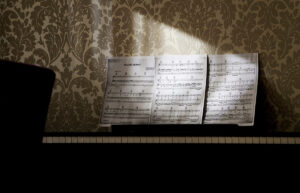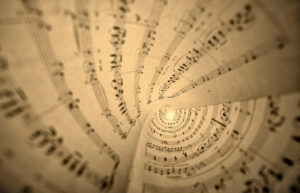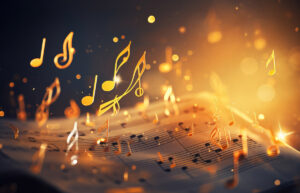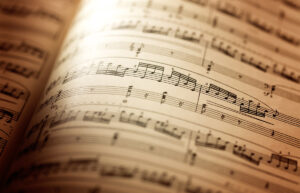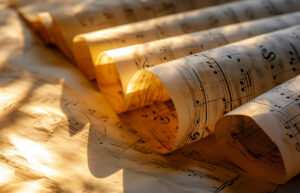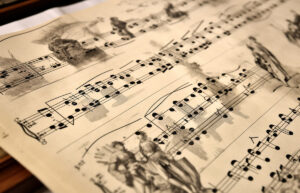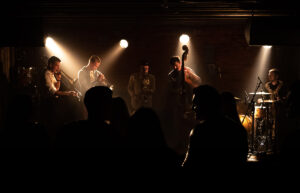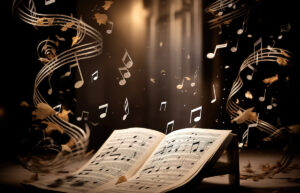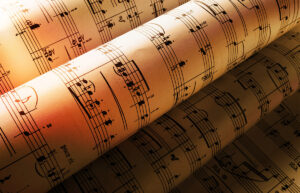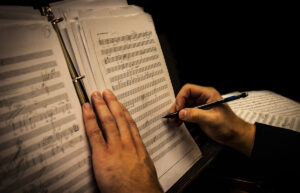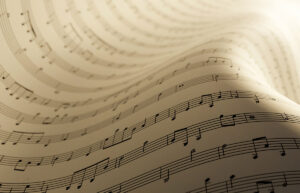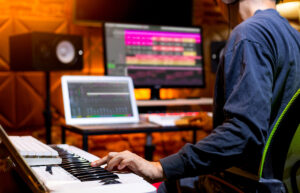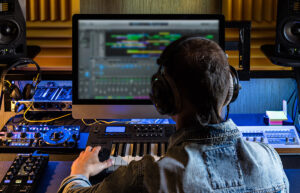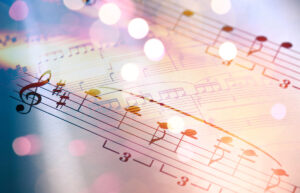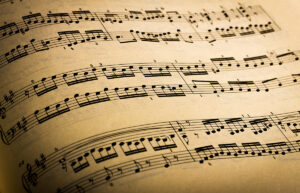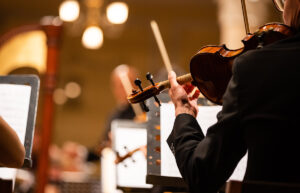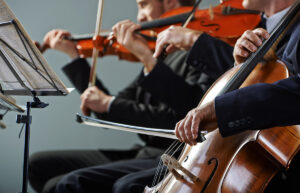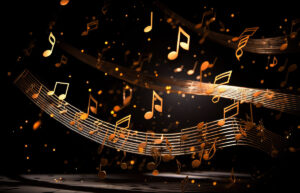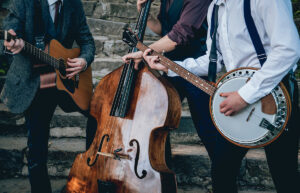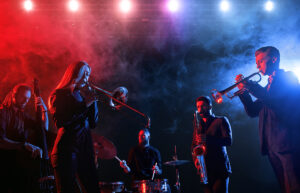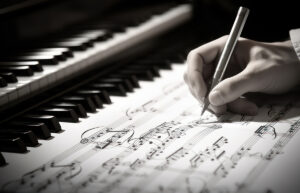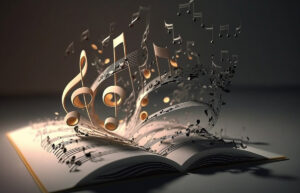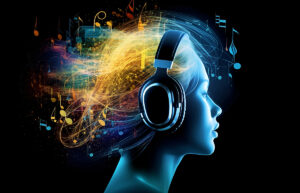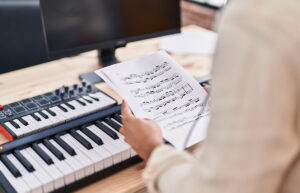Pitch: The Sound of Music
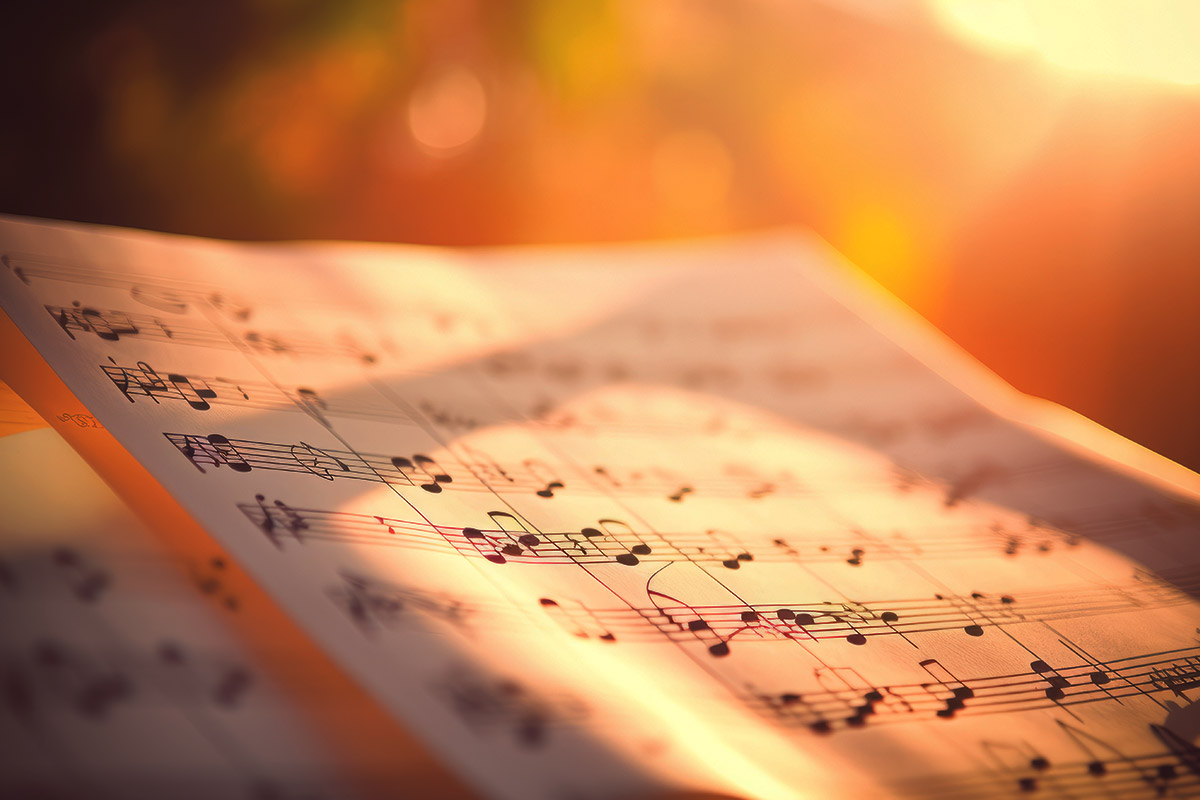
Pitch is the very essence that transforms sound into the soul-stirring experience we know as music. In this blog, we’ll delve into the intricacies of pitch, exploring its definition, types, and the crucial role it plays in the symphony of sound we call music. From understanding how a pitch is measured to uncovering the seven pitch names that define our music, we’ll unravel the mysteries behind this fundamental element.
Discover the importance of pitch in shaping melody and harmony, explore how it affects the emotions of a composition, and learn about examples that showcase pitch in all its diverse glory. Join us on this musical journey as we explore the nuances of the pitch.
Welcome to TheDemoStop, now join the community!
Connect with artists, fans and producers around the world.
What is pitch in music?
In music, “pitch” refers to the perceived frequency of a sound. Essentially, it’s how high or low a note sounds. The pitch of a sound is determined by its frequency, with higher frequencies producing higher pitches and lower frequencies building lower pitches.
Importance of pitch in music
Pitch is fundamental to music, and its importance lies in several key aspects:
Melody creation
Pitch is the foundation for creating melodies. Melodies are sequences of pitches arranged meaningfully and expressively, forming the core of many musical compositions.
Harmony formation
Harmony involves the simultaneous combination of different pitches to create chords. Interacting harmonious pitches add depth, richness, and complexity to the musical texture.
Expression of emotion
Different pitches evoke different emotions. Higher pitches are often associated with brightness and excitement, while lower pitches may convey depth and introspection. Composers and musicians use pitch variations to express a wide range of emotions in their music.
Communication
Pitch serves as a universal language for musicians. Musical notation, including pitch information, allows composers to convey their musical ideas and performers to interpret and reproduce them accurately.
Identification and recognition
Pitch is crucial for identifying and recognizing melodies, themes, and musical motifs. It enables listeners to distinguish between different musical elements and follow the structure of a composition.
Tuning and harmony consistency
Accurate pitch is essential for tuning musical instruments and ensuring they sound harmonious when played together. Consistent pitch is crucial for creating a unified and cohesive musical performance.
Types of pitch in music
High pitch
Definition: High pitch refers to a sound with a higher frequency, resulting in a perception of a higher musical note. In musical notation, high-pitched notes are typically represented toward the top of the staff.
How to identify high pitch?
- Listen for notes that sound bright and sharp.
- On sheet music, notes on the staff generally represent higher pitches.
- Instruments and voices that produce higher frequencies, such as piccolos or sopranos, contribute to the high-pitched elements in music.
- In terms of musical instruments, strings, like those on a violin, produce higher pitches when played in their upper register.
Low Pitch
Definition: Low pitch, on the other hand, refers to a sound with a lower frequency, resulting in a perception of a lower musical note. In musical notation, low-pitched notes are typically represented toward the bottom of the staff.
How to identify low pitch:
- Listen for notes that sound deep and resonant.
- On sheet music, notes positioned lower on the staff generally represent lower pitches.
- Instruments and voices that produce lower frequencies, such as bass guitars or bassoons, contribute to the low-pitched elements in music.
- In terms of musical instruments, larger and longer strings, like those on a double bass, produce lower pitches when played.
How is pitch measured?
Physical vibration
The pitch measurement unit is hertz (Hz), representing the number of rotations of a sound wave per second. One hertz is equivalent to one cycle per second. The higher the frequency, the higher the pitch. For example, if a sound wave completes 440 cycles in one second, the pitch is perceived as the note A at 440 Hz. This measure standardizes the tuning of musical instruments and is known as concert pitch.
Note names
- In musical notation, pitch is denoted by note names. The musical alphabet has the letters A, B, C, D, E, F, and G. These notes repeat in octaves. Each note corresponds to a specific pitch, and the position of the note on the musical staff indicates its pitch relative to other notes.
- The pitch names are refined with sharps (#) and flats (b), representing slight increases or decreases in pitch. For example, A# (A sharp) is slightly higher than A, and Ab (A flat) is somewhat lower than A.
- The same letter name designates octaves, and each octave represents a doubling or halving of the frequency. For example, the A in one octave may vibrate at 440 Hz, while the A in the next octave will vibrate at 880 Hz.
So, while physical vibration (measured in hertz) provides a precise and scientific measurement of pitch, note names offer a more practical and symbolic representation in musical notation and communication among musicians.
What are the seven-pitch names in music?
The pitch names are defined by the alphabetic letters A, B, C, D, E, F, and G. Let’s explore each pitch name:
- A is the starting point for many musical scales and is a fundamental note in Western music. It serves as a reference point for tuning instruments to a standard pitch. The pitch A440, meaning A vibrating at 440 Hz, is often used as a reference in concert tuning.
- B is a tone that contributes to the richness of harmonies. It’s usually found in chords and is crucial for establishing tonal centers in different musical keys. B is also used as a reference pitch when tuning instruments.
- C is a central note in music. It is the beginning or ending point for many musical scales, including the C major scale. The natural notes (notes without sharps or flats) are often taught using the white keys on a piano, starting with C.
- D is a versatile note in many musical contexts. It’s used in various scales and chords, contributing to the overall tonal character of a piece of music. D is also significant in establishing tonal centers in different keys.
- E is an important note for creating musical tension and resolution. It plays a crucial role in defining the quality of chords and is often featured prominently in melodies. Like other notes, E is used as a reference pitch for tuning.
- F is a vital note in establishing tonality and forming the foundation of musical chords. It is also significant in modulation, where a piece of music changes from one key to another. F is a key component in understanding harmonic progressions.
- G is another foundational note in music. It is prevalent in scales and chords and is crucial for creating harmonic movement. G is often featured prominently in melodies and contributes to the overall structure and character of musical compositions.
How does pitch affect music?
Pitch plays a significant role in shaping the mood and emotion of a song. Here’s how pitch affects music in terms of mood and emotion:
High pitch
- Bright and upbeat: Higher pitches are often associated with brightness, energy, and positivity. Melodies featuring high-pitched notes can create a sense of lightness and playfulness, contributing to an upbeat and cheerful mood.
- Excitement and tension: Elevated pitch levels can convey excitement and tension. In moments of anticipation or climax, composers may choose higher pitches to heighten emotional intensity.
Low pitch
- Deep and serious: Lower pitches are generally perceived as deeper and more serious. They can evoke a sense of gravity and contemplation, making them suitable for conveying somber or reflective moods.
- Power and authority: Low pitches can be associated with power and control. In genres like classical and cinematic music, low-pitched instruments often create a sense of grandeur or majesty.
Pitch modulation for emotional shifts: Changing the key or modulating within a piece can shift the emotional tone. Modulation can create a sense of journey or progression, influencing how the listener experiences the emotional arc of a song.
Welcome to TheDemoStop, now join the community!
Connect with artists, fans and producers around the world.
Tips for improving pitch in music
Open wider
Opening your mouth wider while singing allows for better resonance and control of your pitch. It helps in producing clearer and more accurate tones.
Work on your breathing
Proper breath control is crucial for maintaining a consistent pitch. Practice deep diaphragmatic breathing to support your voice and sustain notes.
Improve your musical hearing
Develop your ear for pitch by regularly listening to different genres of music. Try to identify and replicate melodies and pitches by ear. Ear training exercises can also help refine your musical hearing.
Concentrate on vowel sounds
Focusing on the clarity of vowel sounds can enhance your pitch accuracy. Pay attention to how vowel shapes affect your pitch and work on maintaining consistent vowel quality.
Do vocal exercises.
Engage in vocal warm-ups and exercises to strengthen your vocal muscles and improve pitch precision. Scale exercises, arpeggios, and interval training can be particularly beneficial.
Learn to play an instrument
Playing an instrument that requires tuning, such as a piano or guitar, can enhance your understanding of pitch. It helps develop a sense of pitch relationships and improves overall musicality.
Record yourself
Recording yourself while singing or playing an instrument allows you to listen back and identify areas for improvement. It’s a valuable tool for self-assessment and tracking your progress.
Take vocal lessons
Working with a vocal coach can provide personalized guidance and feedback. They can help identify specific pitch-related challenges and give exercises to address them.
Use technology
Utilize pitch training apps or software that provide real-time feedback on your pitch accuracy. These tools can be interactive and fun while helping you refine your skills.
Practice regularly
Consistent practice is key to improving pitch. Set aside dedicated time each day for vocal or instrumental practice to build muscle memory and enhance pitch control.
Essential concepts of pitch
Pitch in melody
Definition: Melody is a sequence of single pitches that are perceived as a single, cohesive entity. It is the linear aspect of music that unfolds over time.
Essential concepts:
- Melodic contour: The shape or trajectory of a melody, whether it rises, falls, or remains static.
- Interval: The distance between two pitches. Different intervals create distinct melodic patterns.
- Range: The span between a melody’s lowest and highest pitches.
Pitch in harmony
Definition: Harmony involves combining different pitches, creating chords. It contributes to the vertical aspect of music.
Essential concepts:
- Chord progression: The sequence of chords in a piece of music. Progressions create movement and contribute to the overall harmonic structure.
- Consonance and dissonance: Consonant chords sound stable and pleasing, while dissonant chords create tension and require resolution.
- Voicing: The arrangement of pitches within a chord. Different voicings can impact the color and texture of the harmony.
Pitch in bass
Definition: The bass is the lowest-pitched range in music and often provides the foundational support for the harmonic structure.
Essential concepts:
- Bassline: The sequence of low-pitched notes played by a bass instrument. It anchors the harmony and rhythm of a piece.
- Root notes: The lowest notes in chords, played by the bass, establish the foundation of the harmony.
- Octave jumps: Basslines may include jumps between octaves to add movement and interest.
Pitch in the beat
Definition: The beat is the basic unit of time in music. It provides a rhythmic framework for the arrangement of sounds.
Essential concepts:
- Pitched percussion: Some instruments in the percussion section, like timpani or pitched drums, contribute specific pitches to the rhythmic framework.
- Syncopation: Playing pitches off the main beats or emphasizing off-beats can add complexity and interest to the rhythmic structure.
- Pitched elements in the rhythm section: In genres like jazz or pop, instruments in the rhythm section (guitar, keyboards) often contribute pitched elements to the overall rhythmic texture.
Five examples of the pitch in music
Perfect pitch
Perfect pitch refers to the ability to recognize and reproduce musical pitches with high accuracy with the need for a reference tone.
Example: A musician with perfect pitch could hear a car horn honking and identify the exact musical note produced by the horn.
Absolute pitch
Absolute pitch is identifying or producing musical pitches without a reference pitch. Individuals with perfect pitch can accurately name or sing a note without hearing a reference.
Example: Someone with perfect pitch might be able to identify that a specific piano key is an A without any external reference.
Sharp pitch
A pitch is considered sharp when it is slightly higher in frequency than the standard or expected pitch. Sharp notes are denoted by adding a sharp symbol (#) in musical notation.
Example: If a piece of music is written in the key of C major, and a musician plays a C# instead of a C, the C# would be considered a sharp pitch.
Flat pitch
A pitch is considered flat when it is slightly lower in frequency than the standard or expected pitch. Flat notes are denoted by adding a flat symbol (♭) in musical notation.
Example: In a piece written in the key of F major, if a musician plays an F♭ instead of an F, the F♭ would be considered a flat pitch.
Diatonic pitch
Diatonic pitch refers to the pitches within a specific diatonic scale of seven notes. Diatonic scales are the foundation of Western classical and popular music.
Example: The C major scale is a diatonic scale consisting of the pitches C, D, E, F, G, A, and B. These pitches follow a specific pattern of whole and half steps, creating a diatonic sequence.
What is the difference between Tone and Pitch?
| Basis of distinction | Tone | Pitch |
| Definition | A sound characterized by frequency, duration, and amplitude. | The perceived highness or lowness of a sound, which is determined by its frequency |
| Aspect | One of sound components along with pitch, duration, and amplitude. | One of the essential elements of music, is representing the highness or lowness of a sound. |
| Frequency | Not specifically related to the frequency of the sound. | Directly related to the frequency of the sound. High frequencies result in high pitch; low frequencies result in low pitch. |
| Musical role | Can be a specific quality or color of a sound, such as bright, warm, or harsh. | Central to the organization of musical elements. It determines the placement of musical notes and the relationships between them. |
| Measurement | Measured in terms of frequency, duration, and amplitude. | Measured primarily in terms of frequency, expressed in hertz (Hz). |
| Perception | Relates to the overall character or timbre of a sound. | Relates specifically to the perceived highness or lowness of a sound. |
| Example | The tone of a guitar may be described as warm or bright. | The pitch of a note on the piano may be described as high or low. |
Welcome to TheDemoStop, now join the community!
Connect with artists, fans and producers around the world.
Conclusion
Pitch definition
Pitch is the perceived frequency of a sound, indicating whether it is high or low. It plays a crucial role in music, defining musical notes, and influencing elements like melody, harmony, and the emotional character of the sound.
Importance of pitch in music
Pitch is the foundation of music, offering structure, emotion, and variety by defining notes, and creating melody and harmony. Without pitch, the music lacks depth and expression, turning into disorganized noise. It serves as the language that transforms sound into beautiful and meaningful art.
Types of pitch in music
- High pitch: Sounds with a fast vibration, producing higher-frequency tones, often associated with brightness and excitement.
- Low pitch: Sounds with a slower vibration, resulting in lower-frequency tones, adding depth and gravity to the music.
How is pitch measured?
- Physical vibration: Measured in Hertz (Hz), indicating how fast or slow the sound waves physically vibrate.
- Note names: Pitch is assigned note names (like A, B, C) to represent specific frequencies on the musical scale.
What are the seven-pitch names in music?
The seven basic pitches are A, B, C, D, E, F, and G.
How does pitch affect music?
Pitch influences the music’s emotional tone, intensity, and character. High pitches often bring brightness and excitement, while low pitches add depth and gravity. Changes in pitch create melody and harmony, shaping the musical narrative.
Tips for improving pitch in music
Enhance your pitch by opening your mouth wider for improved resonance and control, focusing on clear vowel pronunciation, and incorporating vocal exercises like scales. Strengthen breath support, train your ears for accurate pitch reproduction, and consider learning an instrument to grasp pitch relationships and musical context.
Essential concepts of pitch
Pitch encompasses crucial elements in music. In melody, it represents the main tune or sequence of notes, while in harmony, it involves combining different pitches simultaneously for a fuller sound. In the bass, low-frequency pitches offer foundational depth, and in the beat, timing, and frequency influence the overall feel and pace of the music.
5 examples of pitch in music
- Perfect pitch: Identifying and reproducing a pitch with a reference.
- Absolute pitch: Denoting precise pitch recognition without a reference.
- Sharp pitch: Slightly higher than the standard pitch.
- Flat pitch: Slightly lower than the standard pitch.
- Diatonic pitch: Pitches within a specific musical scale, following a pattern of whole and half steps.
Difference: pitch vs tone in music
Pitch:
- Refers to the perceived frequency of a sound.
- Determines the highness or lowness of a note.
- Measured in Hertz.
- Essential for creating melody and harmony in music.
Tone:
- Describes the unique quality or color of a sound.
- Influenced by factors like instrument type, technique, and timbre.
- Adds character and texture to the overall musical experience.
- Differentiates the sound of one instrument or voice from another.
FAQs
What is pitch in music?
In music, pitch refers to the highness or lowness of a sound, determined by the speed of sound wave vibrations. Every note has its pitch, and transitioning from a high-pitched squeak to a low, deep hum involves moving through different pitches.
How do you identify pitch in music?
A pitch in music is essentially the perceived frequency of a sound. When you hear a musical note, your brain interprets the frequency of the sound waves as a particular pitch.
What are the seven basic pitches?
The seven basic pitches are A, B, C, D, E, F, and G.
How is pitch measured in music?
In music, pitch is measured in hertz.
What are the types of pitches?
There are two types of pitches:
- High pitch
- Low pitch
What is the importance of pitch in music?
Pitch in music is like the GPS for your ears—it guides you through the musical journey. The different pitches create melody and harmony, giving the sounds a sense of order and structure. It allows us to distinguish between notes, follow a tune, and experience the emotional depth that different pitches can convey.
What is the difference between tone and pitch?
Pitch and tone are like siblings in the music family. Pitch is about how high or low a sound is—think of it as the note on the musical scale. Tone, on the other hand, is the unique quality or color of a sound. It makes a piano sound different from a guitar, even if they’re playing the same pitch.
How can pitch affect the music?
Pitch is the spice of music, infusing emotion, mood, and tension. High pitches bring brightness, while low pitches add depth. Changes in pitch create melody and harmony, transforming sound into dynamic and memorable music.
What are the examples of pitch in music?
The pitch examples in music are:
- Perfect pitch
- Absolute pitch
- Sharp pitch
- Flat pitch
- Diatonic pitch


